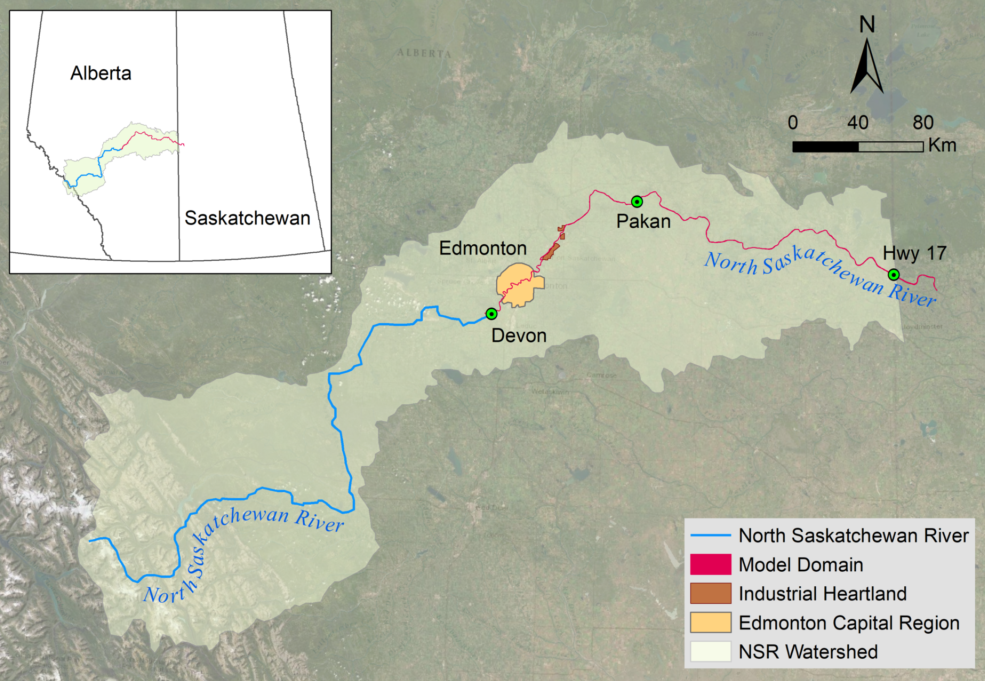
Alberta Environment & Parks (for- merly Alberta Environment and Sustainable Resource Development)
From 2013 – To 2014
Client is using the model for planning purposes.
The North Saskatchewan River (NSR) model comprises of a 411 km reach from Devon to Hwy 17 in Alberta, Canada, and supports a population of approximately one million, including a large segment of Alberta’s petrochemical processing industry. This reach is potentially impacted by activities in the Capital Region and Industrial Heartland (IH). For this reason, Alberta Environment & Parks (AEP) developed a hydrodynamic and water quality model, based on the Environmental Fluid Dynamics Code Plus (EFDC+) to evaluate contaminant loadings, and their effect on river water quality, under various management and engineering options in the IH area. Additionally, the dynamic water quality model is the basis for a larger integrated model of the NSR Basin to support broader-scale watershed and regional planning.
The overall goal of this project was for AEP to build internal capacity to run the hydrodynamic and water quality models, along with other watershed models to support basin wide planning efforts.

DSI provided calibration support to AEP for the NSR water quality model. The EFDC+ model for NSR was calibrated and validated for hydrodynamic processes, and longitudinal and lateral mixing (incorporating new dye study data). The water quality constituents included total suspended solids, temperature, dissolved oxygen, water quality, macrophyte, epilithic algae, and bacteria. The NSR EFDC+ model generally agreed well with the observed data, and DSI docu- mented a series of recommendations to further improve the calibration. DSI provided a comprehensive review of data gaps and steps to improve the model calibration. In addition to calibraton support, DSI delivered an on-site training using EFDC+ Explorer Modeling System (EEMS). We provided a separate document to AEP for guidance in use of EFDC+ Explorer ‘Pre-Post’ processor for the NSR Water Quality Model.
The report and training was completed and then a further revision was made to incorporate new data. The model is now being used by AEP.